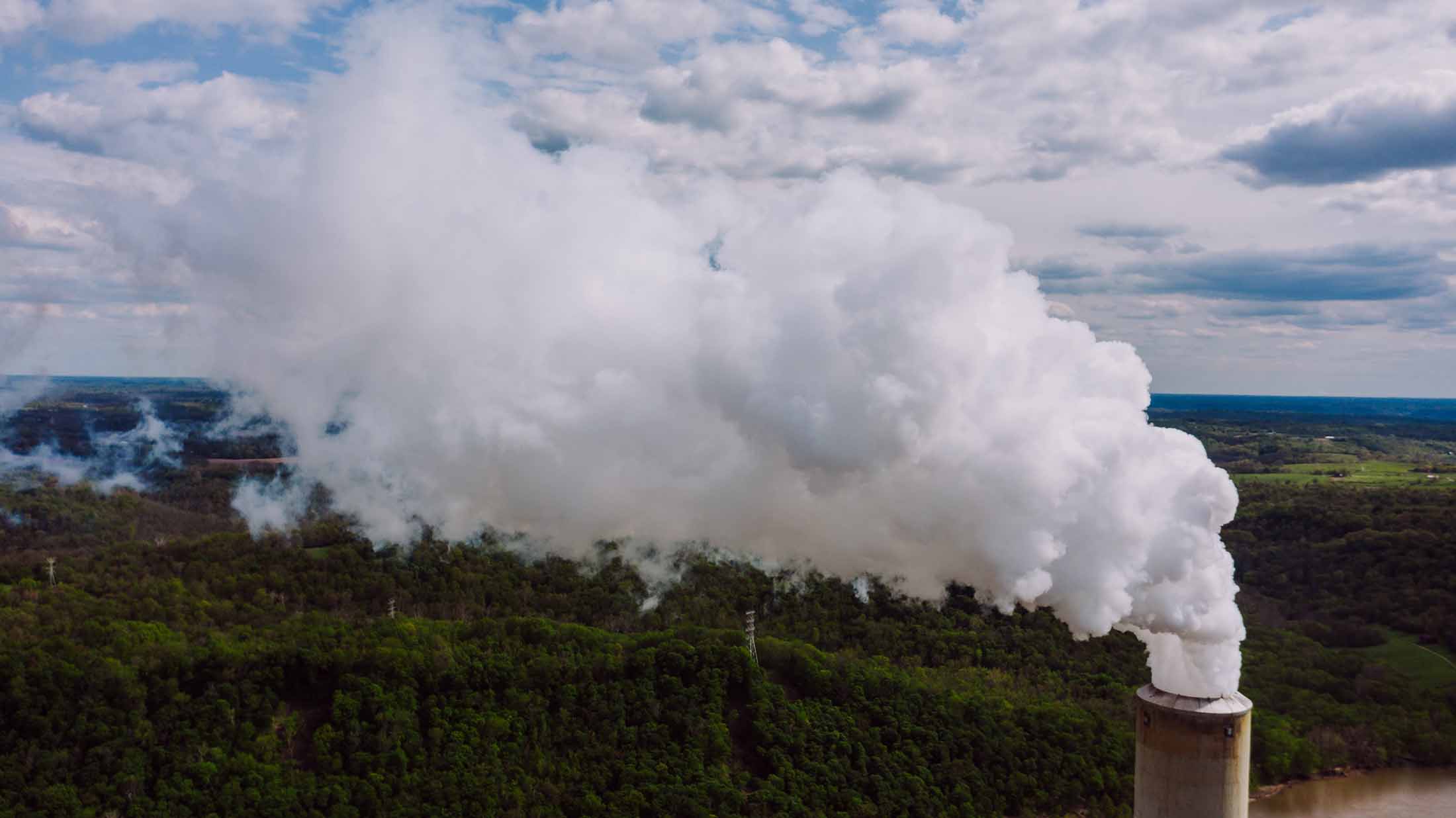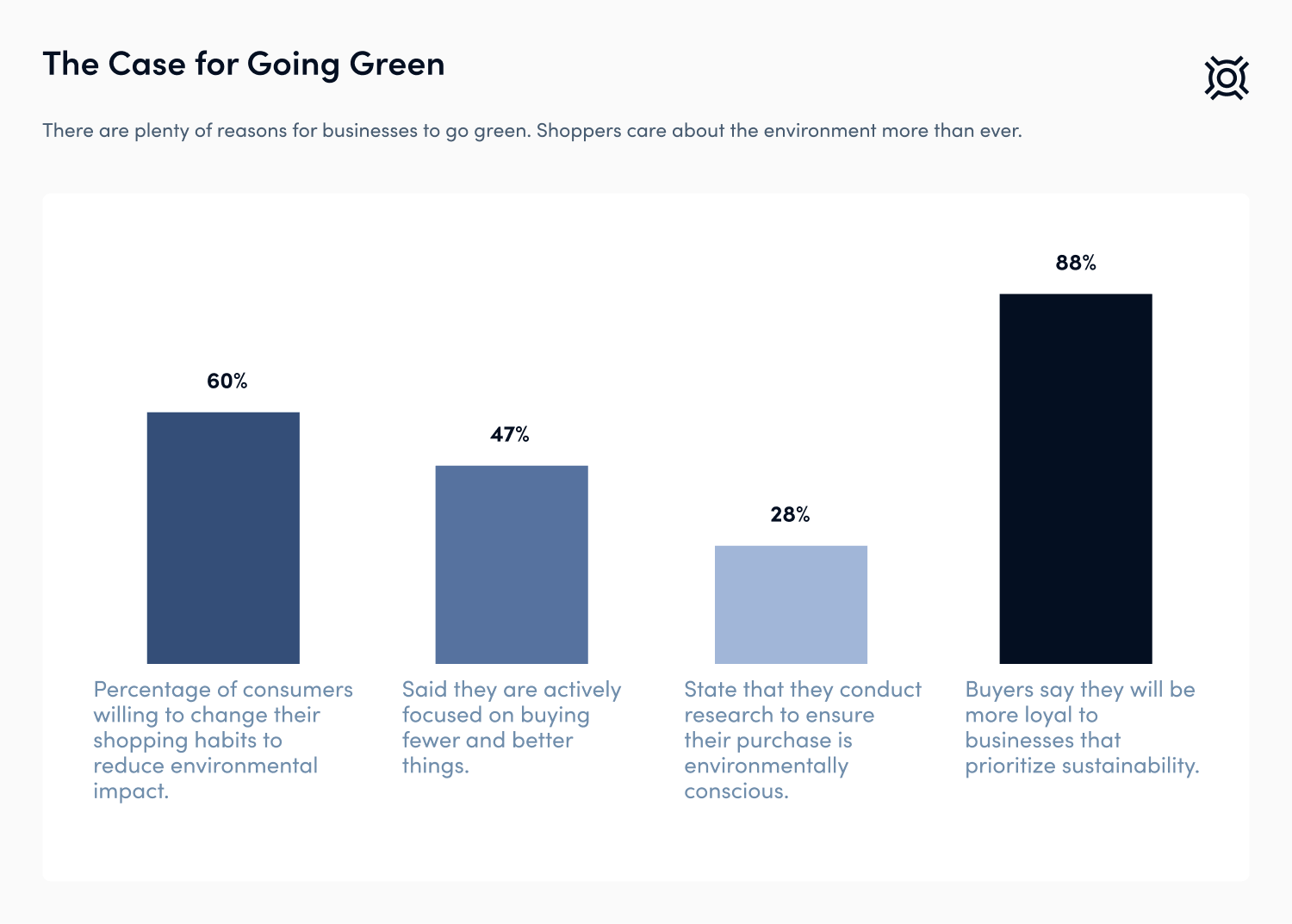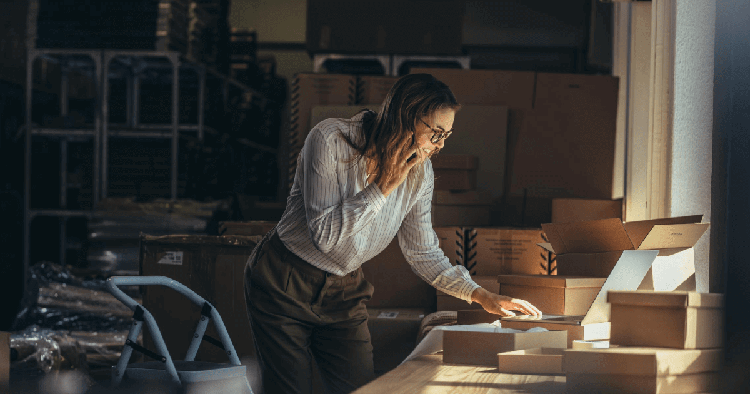What Is Green Logistics and Why Does It Matter?
September 24, 2021 6 min read

According to Forbes, 68% of shoppers plan to base future purchases on their own evaluation of which brands are committed to sustainability. So sure, “saving mother earth” is an admirable reason for your business to go green, but a more compelling reason would be “to impress customers.”
With consumers focused on environmental issues, businesses need to ensure that they measure up to the expectations of their customers to stay competitive. Implementing green logistics can help improve your brand image—more importantly, sustainable business practices are good for your bottom line.
Jump to the section that most interests you:
- What Is Green Logistics?
- The Case for Going Green
- Green Logistics Strategies
- Green Logistics: The Future of Business
What Is Green Logistics?
To put it simply, green logistics encompasses any business practice targeted at making operations more sustainable. Also called eco-logistics, it builds upon the foundation laid by traditional logistics. In traditional logistics, the focus is on operations, but there is no consideration for the environment. The goal of green logistics is to improve both business operations and the sustainability of the organization.
In practice, a green logistics operation looks different depending on the business and the industry it operates in. For example, online retailer Etsy is fulfilling its commitment to offsetting carbon emissions by using “100% renewable electricity“ as well as investing in projects that offset carbon emissions, sometimes called offsets or verified emission reductions. Meanwhile, according to The Atlantic, companies like Misfits Market are leading the charge for green logistics processes among grocers by adjusting its standards for sourcing produce to accept ”ugly“ foods.
The Case for Going Green
There are plenty of reasons to go green. Green logistics can help your business win over customers, cut costs, and lower your carbon footprint. To put things simply, it’s a smart investment.
Win over customers
Shoppers care about the environment more than ever, and their buying habits reflect that. According to recent data from IBM, nearly 80% of consumers consider sustainability to be important. The data also showed that almost 60% of consumers are “willing to change their shopping habits to reduce environmental impact.” With stakeholders focused on the environment, both ecommerce and brick-and-mortar businesses will need to prioritize sustainability to stay competitive.

However, small measures geared toward sustainability won’t be enough. Future Commerce found that 47% of consumers were “actively focused on buying fewer and better things.” It also discovered that another 28% conduct research before buying to ensure their purchase is “environmentally conscious.” In order to meet the expectations of customers, businesses will need to find actionable ways to meaningfully lower their ecological impact, such as implementing green supply chain and logistics strategies.
For businesses that are already doing this or are willing to update their processes to be more green, the rewards are great, with an overwhelming 88% of consumers stating that they will be more loyal to businesses that prioritize sustainability.
Cut costs
Going green and saving money often go hand in hand because sustainable business practices are focused on boosting efficiency and reducing waste. Because green logistics looks different when applied to individual businesses, financial savings and waste reduction also look different for each business.
For example, by converting to green energy supply sources, companies like Google and Amazon reduced their energy costs by as much as 10%. Meanwhile, by removing unnecessary weight from planes, United Airlines lowered its overall fuel consumption and saved $2 billion on fuel costs.
Improve operations
Often, the most efficient method for completing a task is also the greenest method—which means going green will likely help improve operations and supply chain management. For example, along with saving Walmart $1 billion in fuel costs, the organization’s fleet efficiency program also helped to improve its overall energy efficiency. Along with optimizing delivery routes, Walmart’s program focused on green logistics management. Through this, the company made updates to use “the most efficient equipment” and identified more efficient ways to load cargo onto trucks.
Lower your carbon footprint
Many businesses turn to green logistics strategies with the primary goal of reducing their carbon footprint. Driven to find ways to reduce fossil fuel consumption, a lower carbon footprint was one of the primary goals behind Walmart’s fleet efficiency program. Walmart ultimately reduced its carbon dioxide emissions by 650,000 metric tons through the use of sustainable logistics strategies like automating delivery routes.
Green Logistics Strategies
Businesses in all industries can benefit from implementing green logistics strategies. Some of the common sustainable logistics activities include adjusting product sourcing, improving efficiency in warehousing, and reducing emissions from transportation. Used on their own or in conjunction with one another, these strategies can work for businesses in all industries.
Source ethically
Rooted in the standards set by the Ethical Trading Initiative, ethical sourcing is a term used to describe the sustainable methods for sourcing products from companies that treat workers fairly and work to minimize their impact on the environment. According to The Atlantic, companies like Misfits Market practice ethical sourcing by accepting “ugly produce” from organic farms that may not end up on the shelves of stores like Whole Foods, which helps to reduce food waste.
For other organizations like Patagonia and Starbucks, ethical sourcing means ensuring that they only source sustainable materials and products. Patagonia, for example, has what it calls the Supply Chain Environmental Responsibility Program, which focuses on minimizing the environmental impact of production throughout the supply chain. Patagonia implements this program in its own production sites, as well as integrating it into supplier facilities around the globe. Starbucks ensures ethical sourcing by rigorously vetting suppliers to ensure they adhere to high environmental standards.
Streamline warehousing
In the United States, buildings account for almost 40% of all energy used. Whether you operate your business out of an office or a warehouse, using sustainable strategies in your daily operations can help lower energy usage. This is especially true for warehouses, which use an average of 6.1 kilowatt-hours of energy, though that number increases sharply for warehouses that use refrigeration.
To address these energy usage concerns, businesses can leverage a variety of green logistics strategies to lower their energy consumption. One strategy would be to invest in green energy sources, such as solar or wind, to power your warehouses. While switching your energy source seems like a small step, it makes a big impact with a drastically lower carbon footprint.
Another popular option is to invest in on-the-job training centered around energy savings for employees who work on-site. This training could focus on everything, from remembering to switch off the lights to educating employees on ways that they can reduce waste while on the job. Similarly, some organizations implement reduce, reuse, and recycle practices directly into their processes, such as minimizing packaging for products or reducing the amount of paper used by printing on both sides of the page.
Optimize transportation and deliveries
One simple way to make your supply chain greener is to invest in more sustainable vehicles—something that some noteworthy delivery companies have already begun to do. However, while buying electric trucks is a simple step to take, it’s also expensive. It may not be feasible for small organizations. Another strategy that can dramatically improve the sustainability of your transportation (even if you have energy-efficient vehicles) is route optimization.
Efficient routing helps cut down on the overall travel distance, reducing greenhouse gas emissions as well as fuel costs. Route optimization is often aided by a logistics management system. These systems help to optimize not only last mile deliveries but also every step of fulfilling an order, from processing to returns.
Update reverse logistics practices
A noteworthy supply chain strategy, reverse logistics comes into play after a product has been delivered to a customer and refers to the process involved in returning the product back to its origin, which is likely a warehouse or distribution center. If you run a business like a milk delivery service, then at some point, you’ll need to pick up the glass bottles that your milk is delivered in. Optimizing your reverse logistics with a logistics system in the same way you optimize your delivery practices can improve the efficiency and sustainability of your business.
Green Logistics: The Future of Business
Green logistics helps you win over customers, cut costs, and contribute to a cleaner environment for future generations. By leveraging sustainable strategies, you can improve efficiency across your organization while lowering your carbon footprint.
OptimoRoute supports green logistics by optimizing transportation and aiding with reverse logistics. To see for yourself just how OptimoRoute can help increase your transportation and delivery capacity, you can test our software free for 30 days with no obligation.
Try OptimoRoute™ for Free
No installation or credit card required


